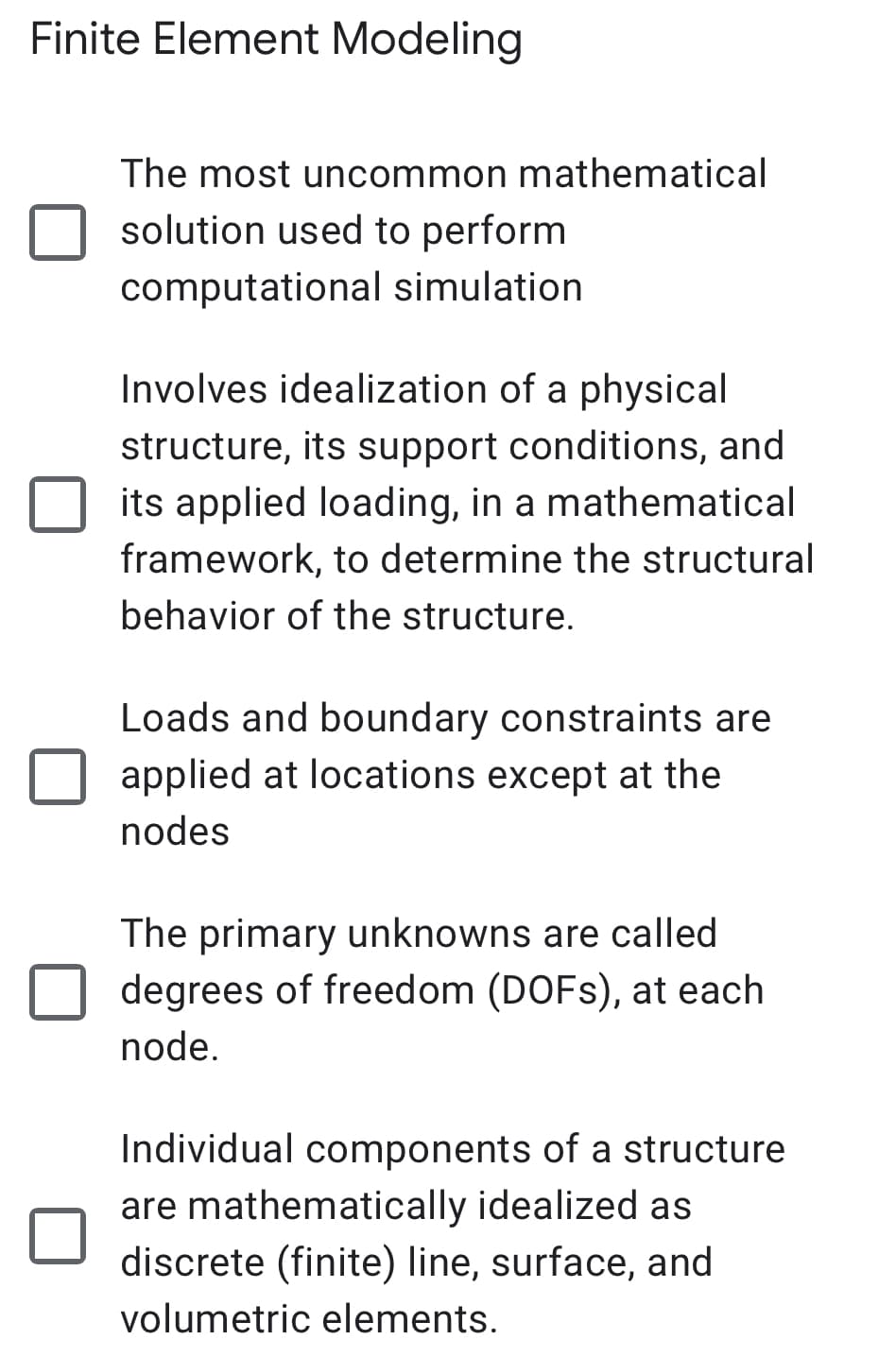Finite Element Modeling The most uncommon mathematical O solution used to perform computational simulation Involves idealization of a physical structure, its support conditions, and O its applied loading, in a mathematical framework, to determine the structural behavior of the structure. Loads and boundary constraints are | applied at locations except at the nodes The primary unknowns are called O degrees of freedom (DOFS), at each node. Individual components of a structure are mathematically idealized as discrete (finite) line, surface, and volumetric elements.
Finite Element Modeling The most uncommon mathematical O solution used to perform computational simulation Involves idealization of a physical structure, its support conditions, and O its applied loading, in a mathematical framework, to determine the structural behavior of the structure. Loads and boundary constraints are | applied at locations except at the nodes The primary unknowns are called O degrees of freedom (DOFS), at each node. Individual components of a structure are mathematically idealized as discrete (finite) line, surface, and volumetric elements.
Principles of Heat Transfer (Activate Learning with these NEW titles from Engineering!)
8th Edition
ISBN:9781305387102
Author:Kreith, Frank; Manglik, Raj M.
Publisher:Kreith, Frank; Manglik, Raj M.
Chapter1: Basic Modes Of Heat Transfer
Section: Chapter Questions
Problem 1.3P: 1.3 A furnace wall is to be constructed of brick having standard dimensions of Two kinds of...
Related questions
Question

Transcribed Image Text:Finite Element Modeling
The most uncommon mathematical
solution used to perform
computational simulation
Involves idealization of a physical
structure, its support conditions, and
its applied loading, in a mathematical
framework, to determine the structural
behavior of the structure.
Loads and boundary constraints are
applied at locations except at the
nodes
The primary unknowns are called
degrees of freedom (DOFS), at each
node.
Individual components of a structure
are mathematically idealized as
discrete (finite) line, surface, and
volumetric elements.
Expert Solution
This question has been solved!
Explore an expertly crafted, step-by-step solution for a thorough understanding of key concepts.
Step by step
Solved in 3 steps with 2 images

Knowledge Booster
Learn more about
Need a deep-dive on the concept behind this application? Look no further. Learn more about this topic, mechanical-engineering and related others by exploring similar questions and additional content below.Recommended textbooks for you

Principles of Heat Transfer (Activate Learning wi…
Mechanical Engineering
ISBN:
9781305387102
Author:
Kreith, Frank; Manglik, Raj M.
Publisher:
Cengage Learning

Principles of Heat Transfer (Activate Learning wi…
Mechanical Engineering
ISBN:
9781305387102
Author:
Kreith, Frank; Manglik, Raj M.
Publisher:
Cengage Learning